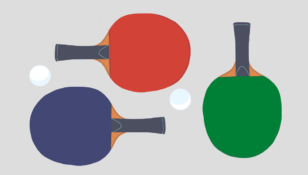OS Curling Final: Sliding Towards Victory

OS Curling Final – An Intense Battle on the Ice
Introduction:

The OS Curling Final is a highly anticipated event in the world of winter sports. This article aims to provide a comprehensive overview of this thrilling competition, covering its various aspects, types of curling events, quantitative measurements, differences between finals, and a historical analysis of their pros and cons.
Unraveling the OS Curling Final
The OS Curling Final, also known as the Olympic Curling Final, is the ultimate test of skill and precision on the ice. It brings together the finest curling teams from around the world, who compete for the coveted gold medal. Curling is a sport where players slide stones on a sheet of ice towards a target area, aiming to accumulate points. The final match showcases the culmination of intense competition and strategic gameplay.
Exploring the Various Types of Curling Events
Curling events at the OS can be divided into different types, namely the men’s curling final, women’s curling final, mixed doubles curling final, and team relay curling final. Each category has its unique dynamics and rules, attracting a diverse range of participants and fans. The men’s and women’s finals have traditionally been the most popular types, with teams from Canada, Sweden, and Scotland often dominating the medal standings.
Measuring Curling Success Quantitatively
The OS Curling Final can be measured quantitatively in terms of team performance, scoring accuracy, and historical records. Success can be measured by analyzing statistics like the number of shots made, points scored, and percentages of successful shots. These metrics help measure a team’s overall performance and provide valuable insights into their gameplay strategies. Additionally, historical records can highlight impressive achievements and showcase teams that have consistently excelled in the OS Curling Final.
Examining the Differences Between OS Curling Finals
Each OS Curling Final holds its unique characteristics and sets of rules. The differences can range from variations in the number of ends (innings) played, shot limitations, and scoring systems. Moreover, the ice conditions, such as the pebble (texture), speed, and temperature, can significantly impact gameplay tactics and shot execution. It is intriguing to examine how these differences add complexity to the competition and challenge players to adapt their strategies accordingly.
Historical Overview: Pros and Cons of Different OS Curling Finals
Over the years, various formats and rules have been implemented in OS Curling Finals, each with its benefits and drawbacks. The traditional format allows for strategic gameplay and prolonged matches, showcasing a team’s endurance and consistency. On the other hand, formats like mixed doubles or team relays add a dynamic element by requiring quick decision-making and teamwork. These alternative formats bring new excitement to the sport but may face criticisms from traditionalists. Ultimately, the evaluation of pros and cons depends on personal preferences and the overall goal of promoting curling as a global sport.
Conclusion:
The OS Curling Final is a captivating event that attracts international attention and delivers thrilling moments on the ice. Its various types, quantitative measurements, and differences between finals contribute to its charm and excitement. As curling continues to evolve and adapt to the demands of modern audiences, the OS Curling Final remains an essential chapter in the history of this sport.
By covering the essentials and providing in-depth insights, this article aims to educate and engage curling enthusiasts and curious readers alike. Whether it’s the intense strategy of a men’s final or the dynamic teamwork of a mixed doubles final, the OS Curling Final offers a spectacle for all to enjoy. Let the stones glide, and the battle for gold commence!

















